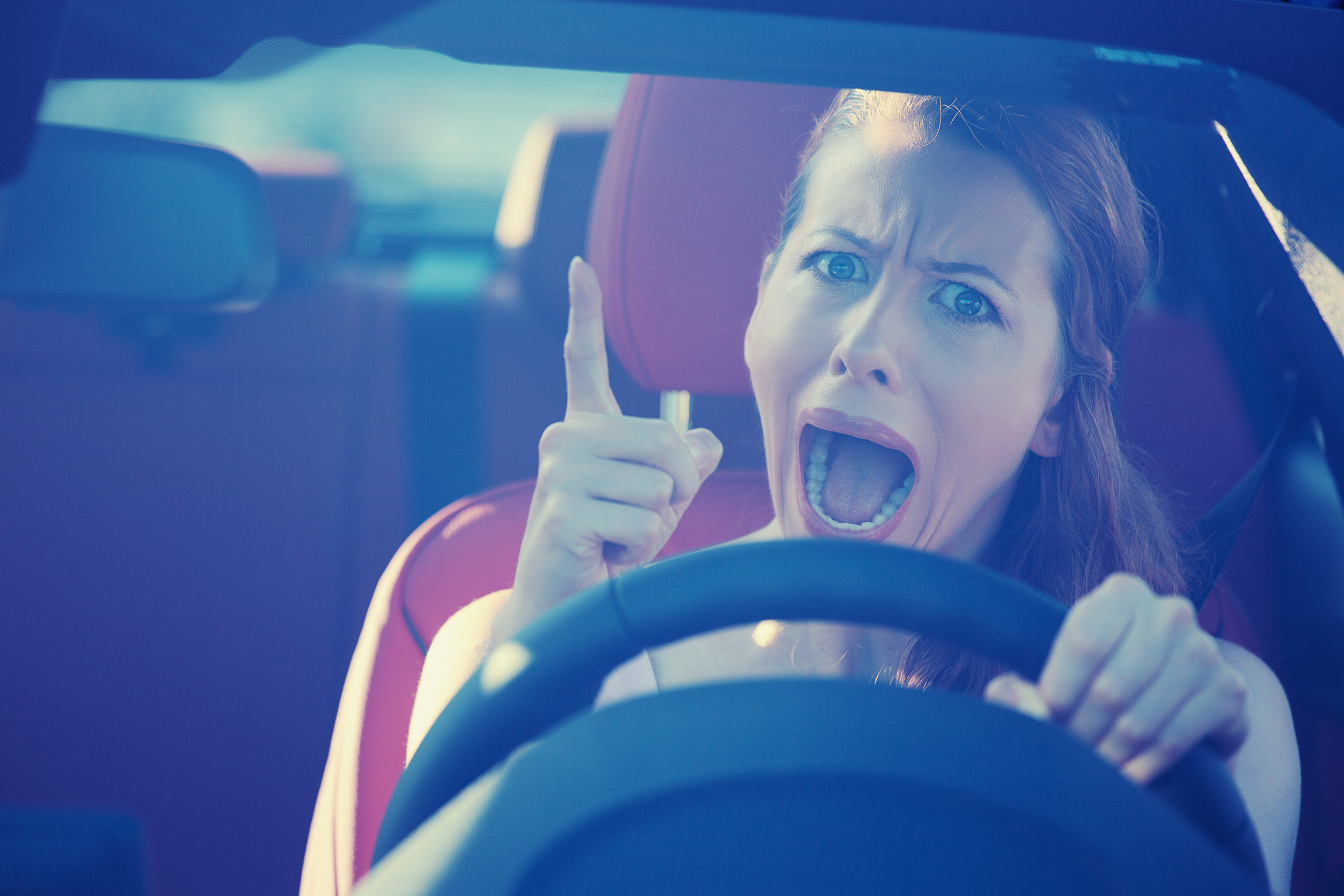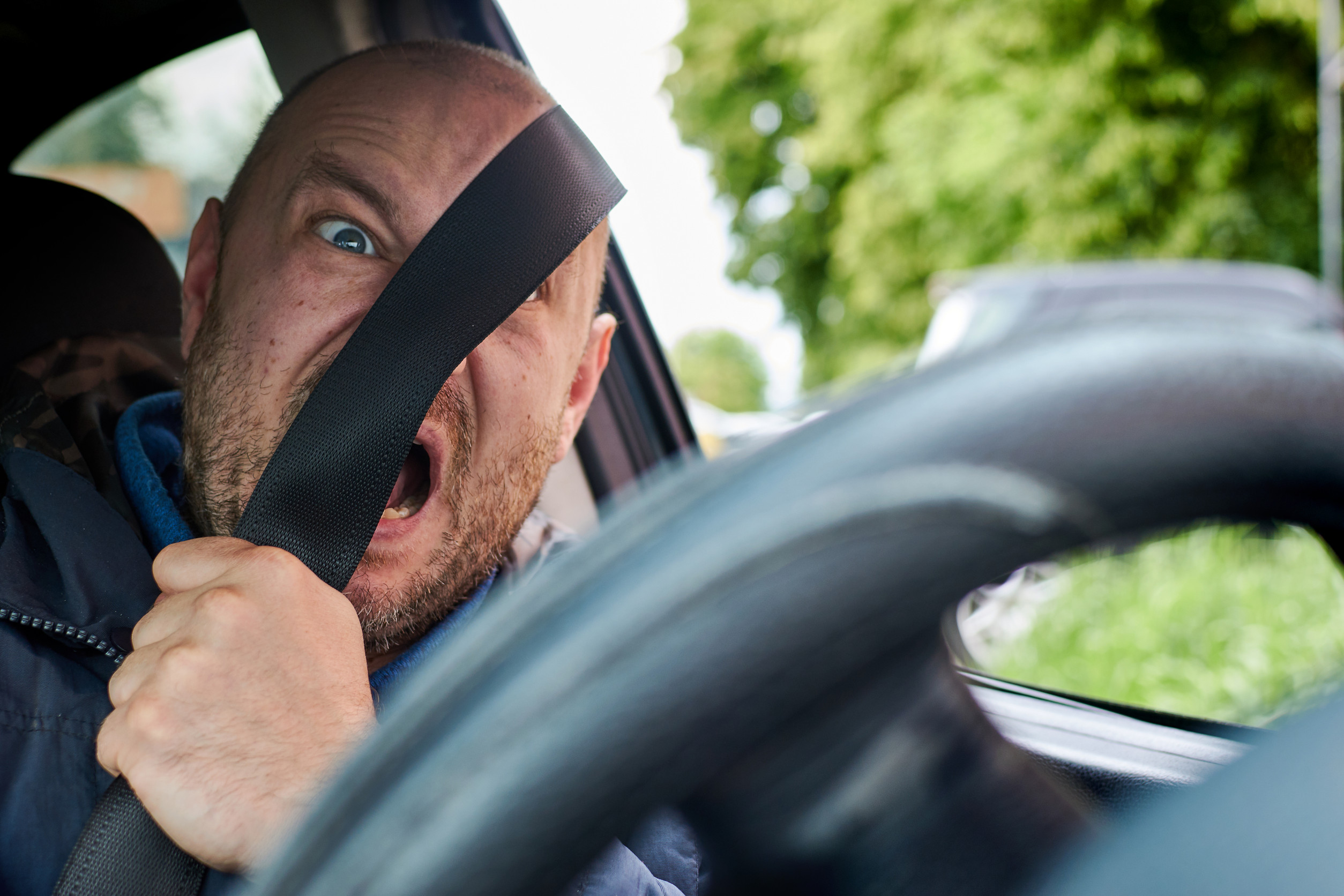
Driving can be stressful. Traffic jams, delays, and the actions of other drivers can test anyone’s patience. Occasionally, this frustration boils over into aggressive gestures, like another driver “flipping you off.” Receiving this rude gesture can trigger anger, indignation, or a desire to retaliate.
However, reacting impulsively or aggressively in these situations is incredibly dangerous. It can escalate a minor incident into a serious road rage confrontation with potentially tragic consequences. Your safety is paramount. Here are ten things you should absolutely NEVER do if faced with an obscene gesture in traffic.
1. NEVER Retaliate with Your Own Gestures or Honking
Your first instinct might be to return the gesture or lay on your horn in anger. Resist this urge completely. Retaliating immediately escalates the situation from a simple rude gesture to an active confrontation. It signals to the aggressive driver that you are engaging, which might provoke them further. Honking aggressively can also be interpreted as a challenge. Maintaining your composure and refusing to engage is the safest first step. Don’t add fuel to the fire.
2. NEVER Make or Maintain Eye Contact
Aggressive drivers often perceive direct eye contact as a challenge or sign of confrontation. While it might feel natural to look over, actively avoid making or holding eye contact with the person who gestured at you. Looking straight ahead and focusing on your own driving signals disengagement. It subtly communicates that you are not interested in escalating the interaction. Avoiding eye contact helps defuse the immediate tension and reduces the chance the other driver will pursue further conflict.
3. NEVER Tailgate or Follow the Other Driver
Anger might tempt you to tailgate the offending driver to express displeasure or try to “teach them a lesson.” Following them, even just to see where they are going, is even more dangerous. These actions are highly aggressive and significantly increase the risk of a serious confrontation or accident. The other driver could interpret this as a direct threat, leading them to react unpredictably or dangerously. Create distance, don’t close it. Your goal is de-escalation and safe separation.
4. NEVER Yell or Engage Verbally

Opening your window to yell insults or engage in a verbal argument is pointless and perilous. You cannot win a roadside argument, and attempting to do so only escalates hostility. The other driver might be irrational or armed. Engaging verbally invites further conflict and potentially puts you in physical danger, especially if stopped in traffic. Keep your windows up, doors locked and focus entirely on safe driving and disengagement. Silence is your safest response.
5. NEVER Use Your Vehicle Aggressively (Speeding, Brake Checking)
Using your car as a tool for retaliation is incredibly dangerous road rage behavior. Never speed up to cut the other driver off, intentionally brake hard in front of them (“brake check“), or swerve towards their vehicle. These maneuvers can easily cause serious accidents, injuring yourself, the other driver, or innocent bystanders. Such actions can also lead to serious criminal charges. Maintain normal, defensive driving practices, focusing solely on safety and predictability.
6. NEVER Get Out of Your Car to Confront Them
Under almost no circumstances should you exit your vehicle to confront another driver during a road rage incident. Leaving the safety of your car exposes you to potential physical assault or worse.
You have no way of knowing the other person’s intentions or if they possess weapons. Stay inside your locked vehicle. If the situation feels truly threatening, call emergency services (911 or your local equivalent) and report the aggressive driver’s behavior and location if possible.
7. NEVER Assume You Know Their State of Mind
You have no idea what the other driver is going through or why they acted aggressively. They could be having a terrible day, dealing with personal issues, impaired, mentally unstable, or simply prone to rage.
Assuming they are rational or will respond predictably is risky. Attributing motives (“they disrespected me!”) only fuels your own anger. Focus on the objective fact: their behavior is unsafe, and your priority is to remove yourself from the situation safely, regardless of their reasons.
8. NEVER Escalate the Situation in Any Way
The overarching principle is de-escalation. Every action listed above represents an escalation. Any response other than calm disengagement risks making the situation worse. Do not mimic their driving, do not engage, do not challenge. Focus on creating space, driving predictably, and letting the other driver move on. Your ego might feel bruised, but your safety is infinitely more important than “winning” a roadside encounter or responding to disrespect. Choose safety over reaction every time.
9. NEVER Drive Directly Home If You Suspect You’re Being Followed
If the aggressive driver seems to be following you after the incident, do *not* drive directly to your home. This would reveal your location to a potentially unstable person. Instead, drive to a safe, public, well-lit place, preferably a police station or fire station. If that’s not immediately possible, go to a busy shopping center or gas station where there are witnesses. Call emergency services while driving if necessary, reporting that you are being followed by an aggressive driver.
10. NEVER Let It Ruin Your Entire Day (Or Compromise Future Driving)
Experiencing aggressive behavior on the road is upsetting. It’s normal to feel angry or shaken afterward. However, dwelling on the incident for hours or letting it make you overly anxious or aggressive in future driving situations is counterproductive. Practice techniques to let the anger go – deep breaths, listening to calming music, reminding yourself you acted safely. Don’t allow one rude driver’s actions to have a lasting negative impact on your emotional state or your own safe driving habits.
Prioritize Safety Above All Else
Encountering aggressive gestures in traffic is unfortunately common. Your response dictates whether the situation escalates or defuses. Retaliation, engagement, or confrontation are never the safe options. Prioritize de-escalation by avoiding eye contact, refusing to gesture back, creating distance, and focusing on your own safe driving. If threatened, seek a safe location and contact authorities. Remember that your personal safety and well-being are far more important than reacting to a momentary display of rudeness or aggression from a stranger on the road. Stay calm and drive defensively.
Have you ever encountered aggressive gestures or road rage? How did you handle the situation safely? Share your experiences or tips for de-escalation below.
Read More:
The Shocking Rise of Road Rage: 5 Startling Facts That Will Make You Rethink Driving
6 Safety Tips You’ll Regret Not Teaching Your Kids

Latrice is a dedicated professional with a rich background in social work, complemented by an Associate Degree in the field. Her journey has been uniquely shaped by the rewarding experience of being a stay-at-home mom to her two children, aged 13 and 5. This role has not only been a testament to her commitment to family but has also provided her with invaluable life lessons and insights.
As a mother, Latrice has embraced the opportunity to educate her children on essential life skills, with a special focus on financial literacy, the nuances of life, and the importance of inner peace.
